Ijaw culture and traditions
We bet you, Ijaw culture and traditions are worth getting acquainted with. They are considered to be the least studied among other Nigerian cultures, but still have a lot of exciting things to present, which everyone will find astonishing. We are sure you are already curious about it.

Source: Depositphotos
READ ALSO: Ijaw traditional attire you will adore
Distinguishing features of Ijaw culture
Ijaw cultur really has a lot of things to offer, cause the history of Ijaw and its culture itself is fascinating and runs deeply, despite the fact it is poorly studied.
Languages

Source: Depositphotos
Photo: proandroiddev.com
First, we are going to observe the Ijaw language. To be more specific, languages. There are nine closely cognate Niger–Congo languages. All these languages belong to the Ijoid section of the Niger–Congo language family. The main division between the Ijo languages is between Eastern Ijaw and Western Ijaw. Izon is the most prominent of the ancient language group. It is spoken by about five million Nigerians.

Source: Depositphotos
Photo: depositphotos.com
Izon language has two prominent groups. The first, related to Western (Central) Ijaw, is made up of speakers from eleven clans such as Tuomo, Mein (or Sagbama), Ekeremor, Apoi, Tarakiri, Bassan, Bumo (or Bomo), Arogbo, Kabuowei, Kololuma-Opokuma, and Ogboin. The Southeast Izon is represented by Nembe, Brass, and Akassa (or Akaha).
Kalabari is another influential Ijaw linguistic group. It is considered an Eastern Ijaw language, related to Kalabari clan, which is located on the eastern side of the Niger-Delta. There are several smaller language groups in Ijaw, which are defined by very close cultural and territorial bonds. They are the Epie-Atissa, Engenni, and Degema (or Udekama).
Religious traditions
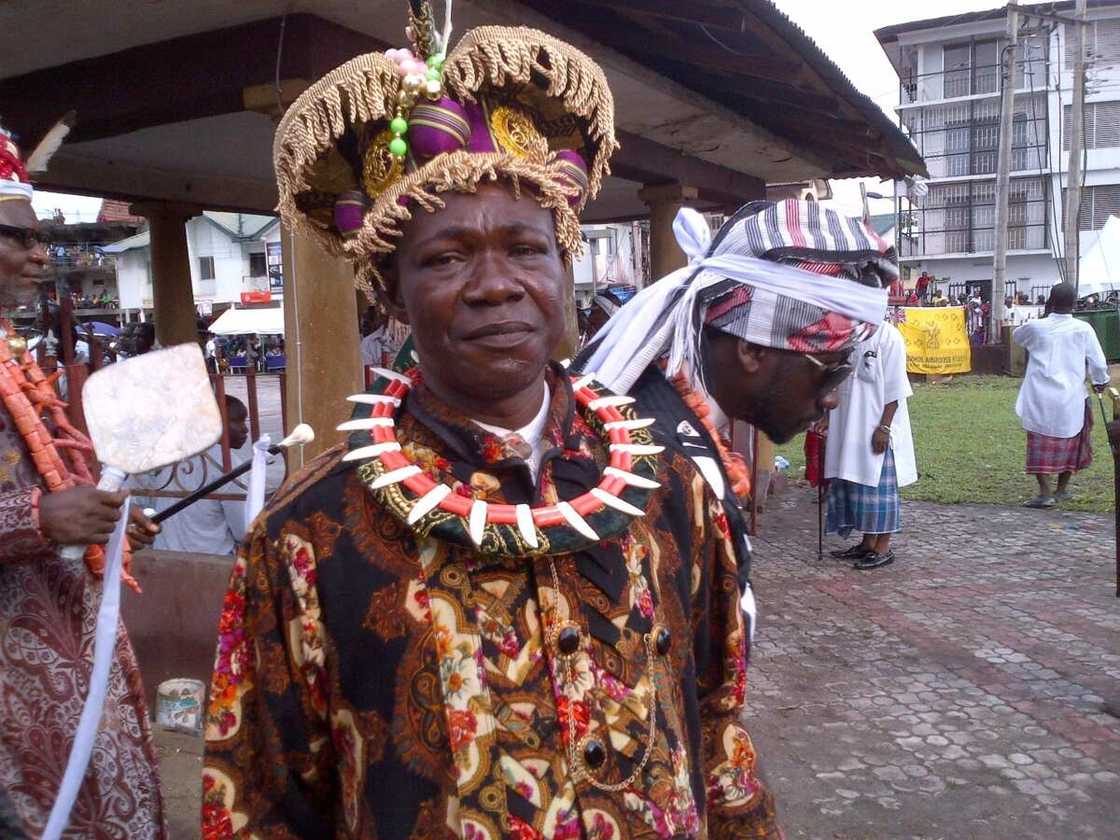
Source: Depositphotos
Photo: dailywatchng.org
READ ALSO: Nigerian traditional art and culture
Although the Ijaw majority is Christian, traditional religious elements are still making the rounds. For Ijaw people, it is crucial to hold in reverence the reminiscence of ancestors and religious traditions. One of the most prominent idols is one of the water spirits called Owuamapu. Ijaw people believe that water spirits are just like humans, they have their accomplishments and imperfections.

Source: Depositphotos
There is also a belief, that every person had been one of the water spirits before he was born. They pray to water spirits. Each year the Ijaw hold festivals in honor the spirits, which can last for a few days. During these celebrations, men wear fancy attires and carved masks, dance to the rhythm of drums and expose the impact of the water spirits through the mood and energy of their dancing.
Traditional Ijaw food
The main role in the nutrition of the Ijaw people is played by agricultural products, among which yams occupy the first place. Many different dishes can be prepared from its tubers containing starch. There are several varieties of yams, each of which has a special purpose: white yam goes for making flour and porridge, bread is made from yellow.

Source: Depositphotos
Photo: seriouseats.com
Ijaw peope also use corn, sorghum, millet and taro. Sometimes taro is mixed with yam, manioc or bananas. Sweet potatoes, pumpkins, eggplants, breadfruit are common products as well.
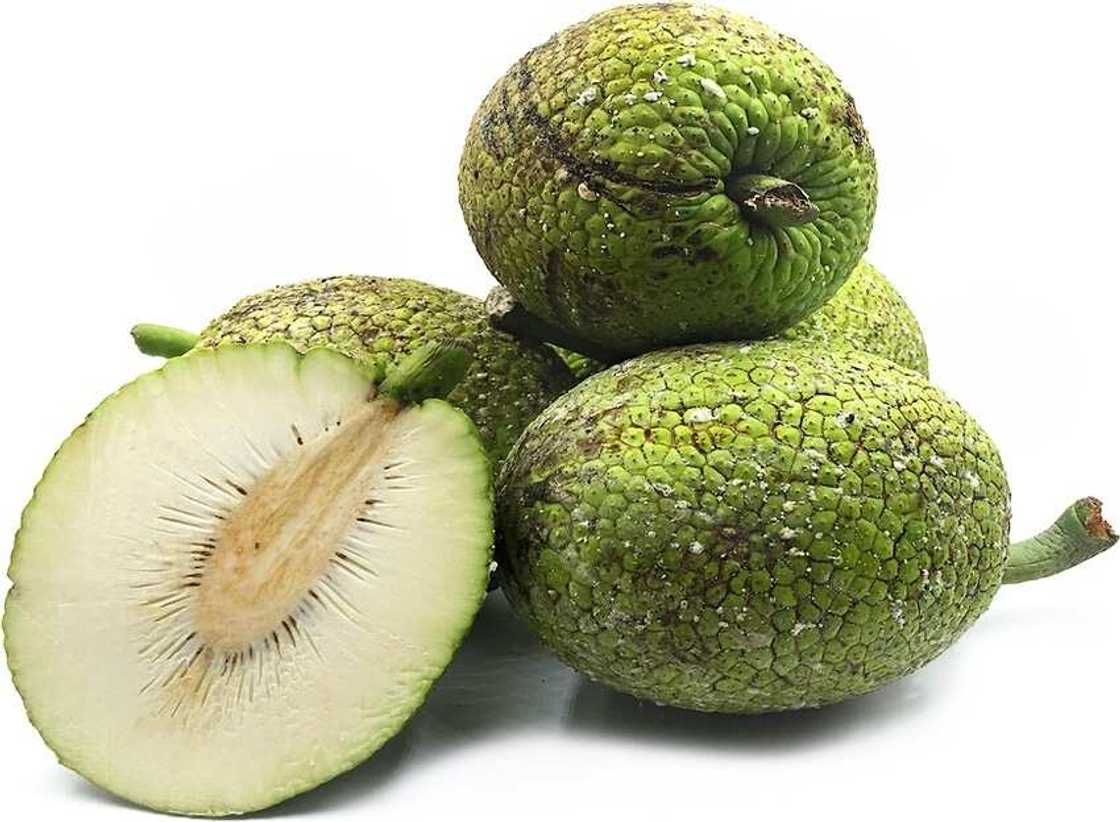
Source: Depositphotos
Photo: thecoconet.tv
Many dishes are made from legumes. Dishes made from wheat are common, especially houraza, a special kind of wheat bread. Rice, which is considered to be a luxury product, is increasingly consumed here. Most of the dishes are very hot: they put a lot of pepper, onion, and tomatoes in them. When stewing meat and vegetables, leaves of various plants are put, for example, baobab, and a lot of spices. Bananas, pineapples, oranges, mangoes, lemons, papayas are common among fruits.

Source: Depositphotos
Photo: twitter.com
Here is the top-5 list of the most popular dishes:
- Polofiyai - is very nutritious soup cooked with yams and palm oil.
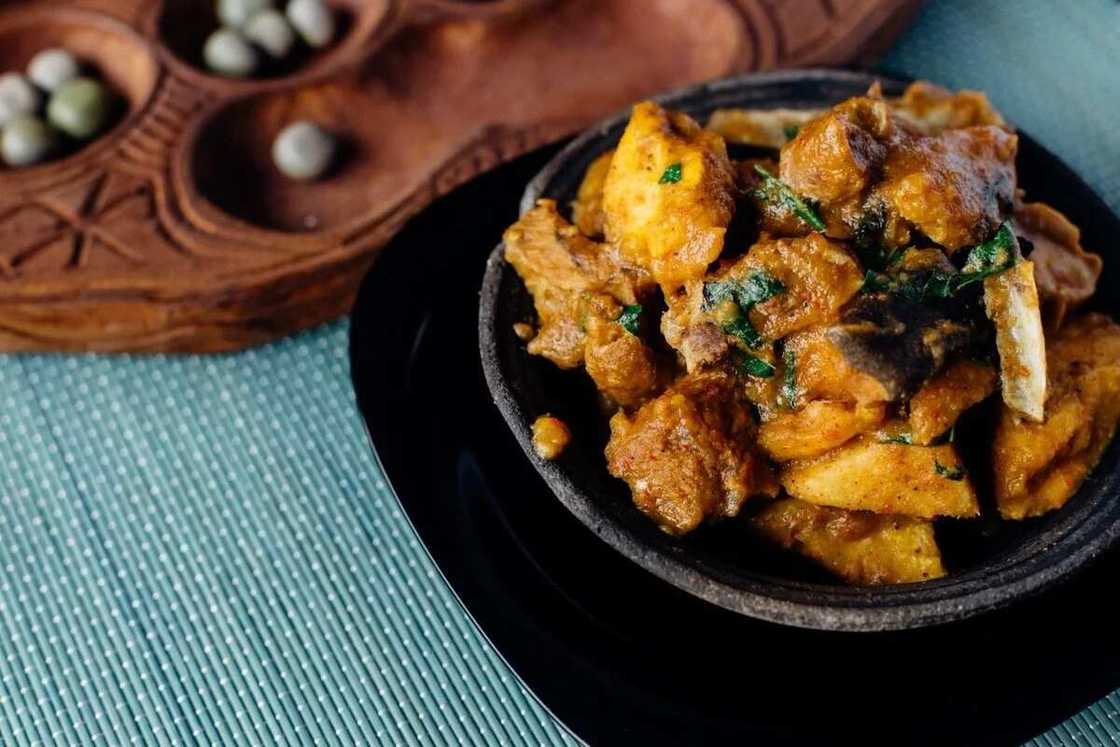
Source: Depositphotos
Photo: deskram.net
- Kekefiyai - is a thick soup made with chopped green plantains, fish, other seafood or fowl and of course alm oil.
- Fried or roasted fish and cooking banana - is a dish made of fish, fried in palm oil, and served with fried plantains.
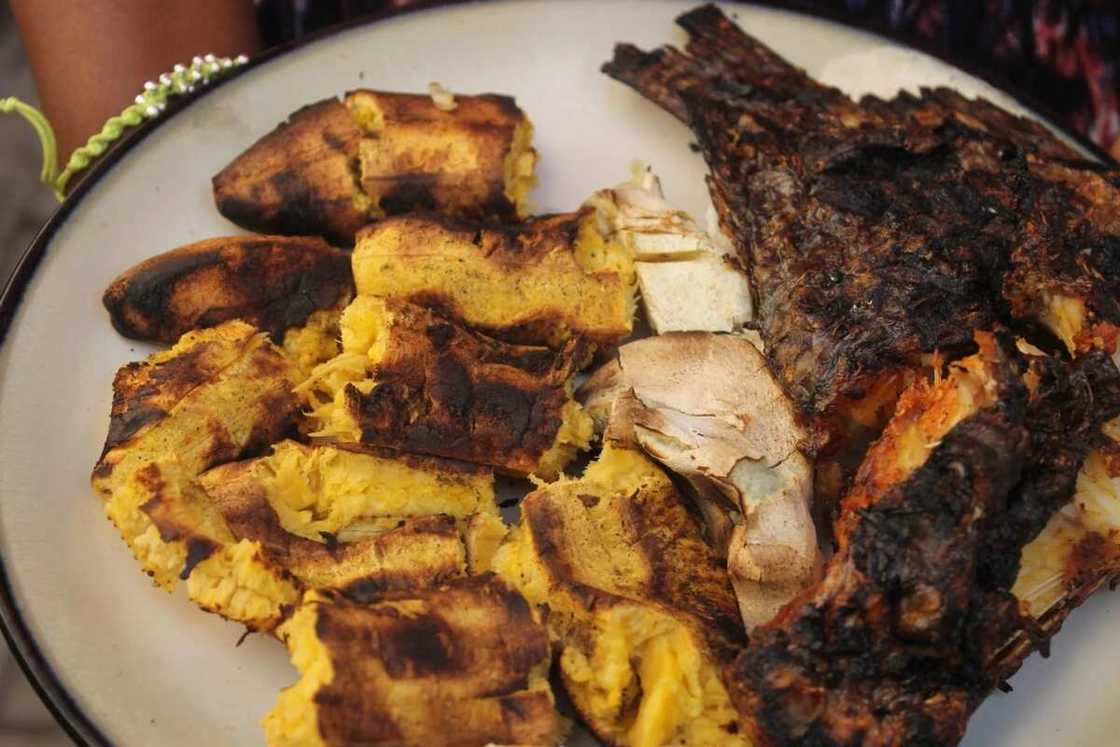
Source: Depositphotos
Photo: deelamilovesit.blogpost.com
- Kalabari "sea-harvest" fulo - is a seafood soup or stew that can be served with foofoo, rice or yams.
- Owafiya ( or Beans Pottage) - is a thick soup made with beans, palm oil, fish or game meat, with yam or cooking bananas. Usually, it is taken with processed cassava or starch.

Source: Depositphotos
Photo: 1qfoodplatter.com
READ ALSO: Hausa culture and traditions in Nigeria: top facts to know
Traditional Ijaw dressing

Source: Depositphotos
Photo: pinterest.com
In Ijaw, women's national clothing consists of a large piece of cloth wrapped around the hips and a blouse. Although in recent years more and more European-cut dresses are decorated with embroidery with beaded caps Exclusively picturesque hats. There are a lot of varieties of styles of knitting scarves. Jewelry made of gold, silver, beads are very trendy. Traditional hairstyles are characterized by high complexity.
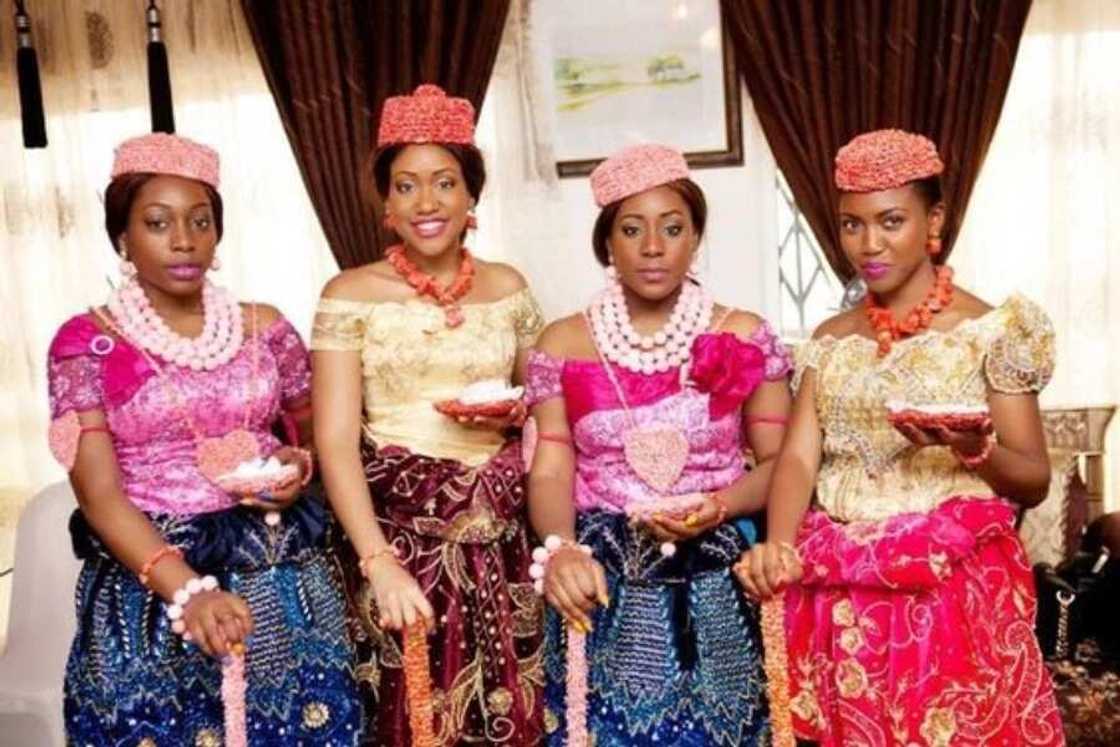
Source: Depositphotos
Photo: pinterest.com
Men's clothing consists mainly of short pants and a shirt, over which a loose cape is worn. In the northern areas, the traditional dress of Ijaw is an elongated tunic, which is usually worn with baggy trousers. Moreover, the tunic and pants are an ensemble and must be the same color.

Source: Depositphotos
Photo: joy.az
Actually, etibo is an informal version of a tunic without buttons, and Uoko is an official one with three buttons and an aglet. The popularity of etibo among the ruling elite of Nigeria led to the emergence of a new name for the attire “senator”, which now almost entirely supplanted the original name.
Ijaw traditional music
The Ijaw culture has its own autochthonous music style called awigiri (or awijiri). Although, this form of music is almost entirely obscure outside of Nigeria but has initiated the careers of plenty of famous performers, and they in their turn have produced beautiful musical pieces over the years.
Now, we want to introduce to you some of the most popular awigiri performers:
- Anthony Cockson

Source: Depositphotos
Photo: likembe.blogspot.com
- A. S. Eseduwo
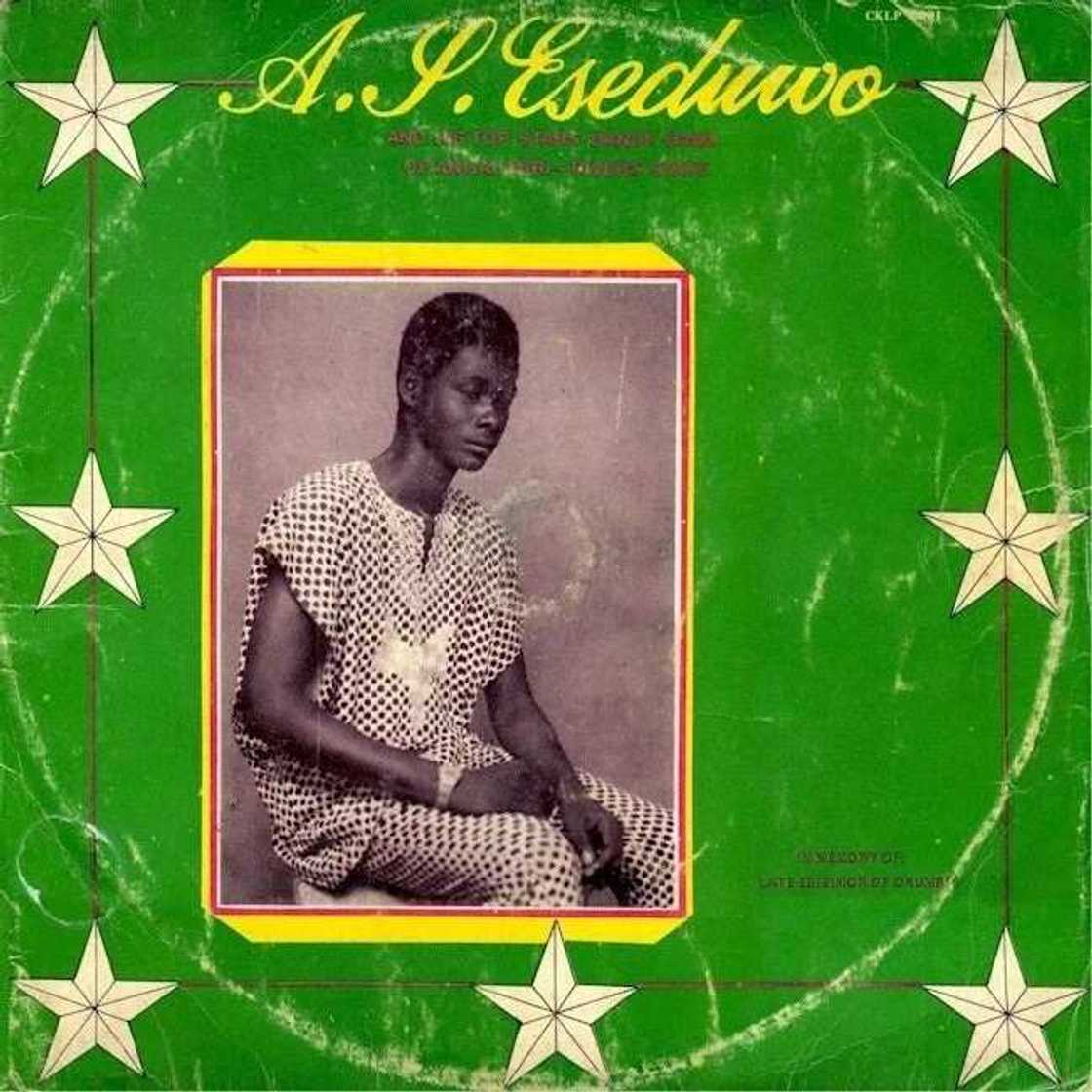
Source: Depositphotos
Photo: likembe.blogspot.com
- King Robert Ebizimor
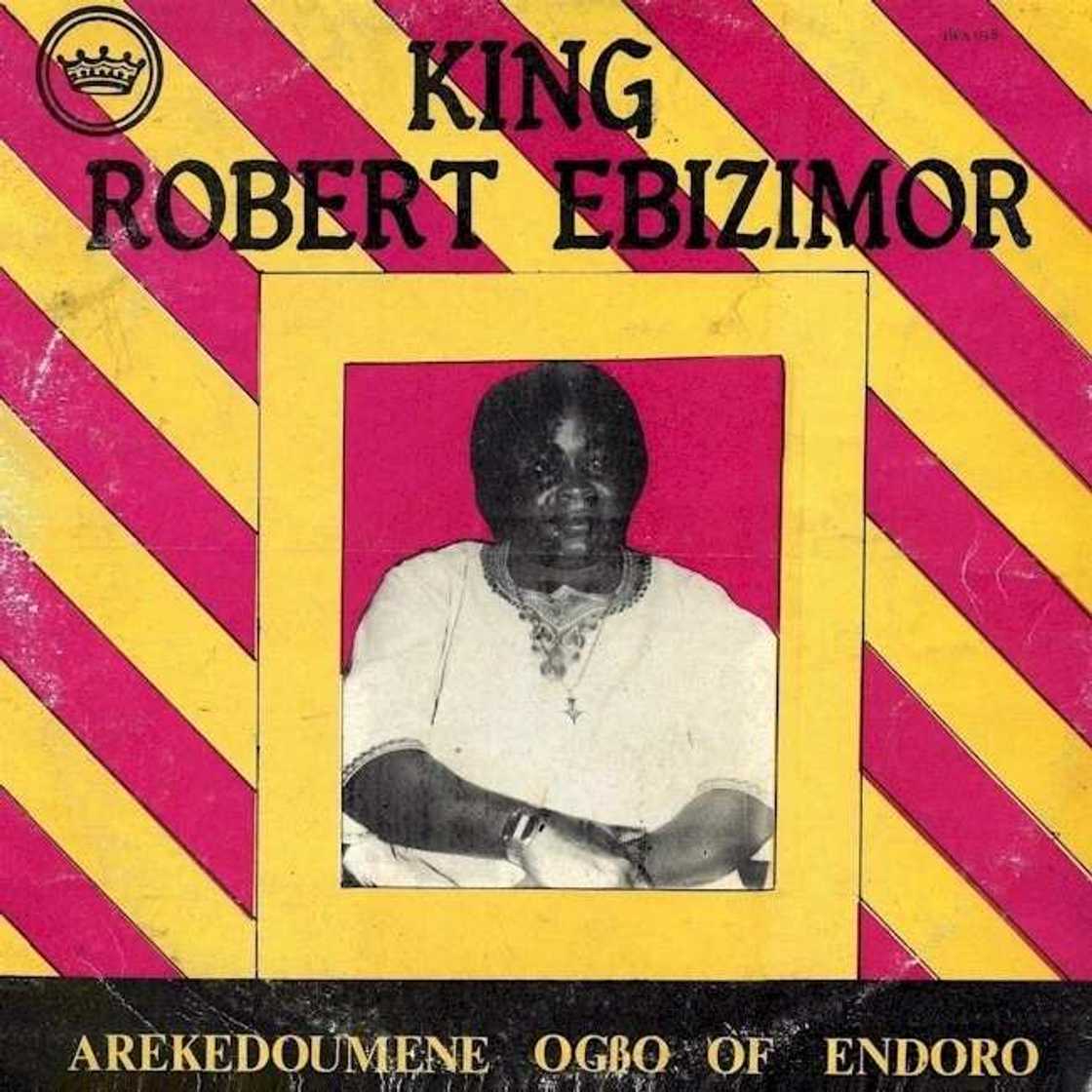
Source: Depositphotos
Photo: likembe.blogspot.com
- Chief Bukka
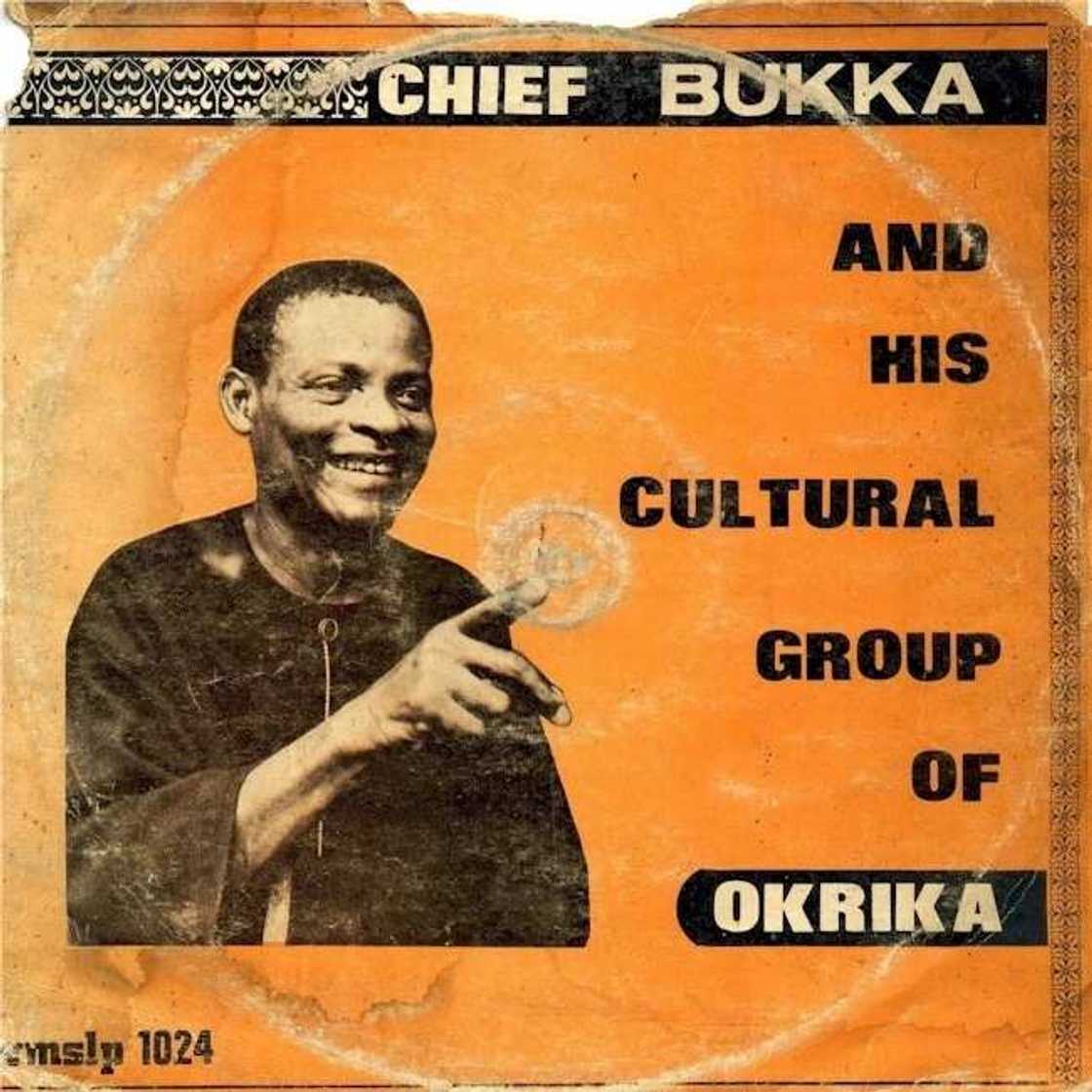
Source: Depositphotos
Photo: likembe.blogspot.com
- Barrister S. Smooth

Source: Depositphotos
Photo: likembe.blogspot.com
Traditional musical instrument is mainly represented by a specific type of drum. The most common drum types for Ijaw people are the Ibid (or Ibibio) and Ekomo (or Efik). Both are medium-sized and covered with leather skin like tom-tom drums.
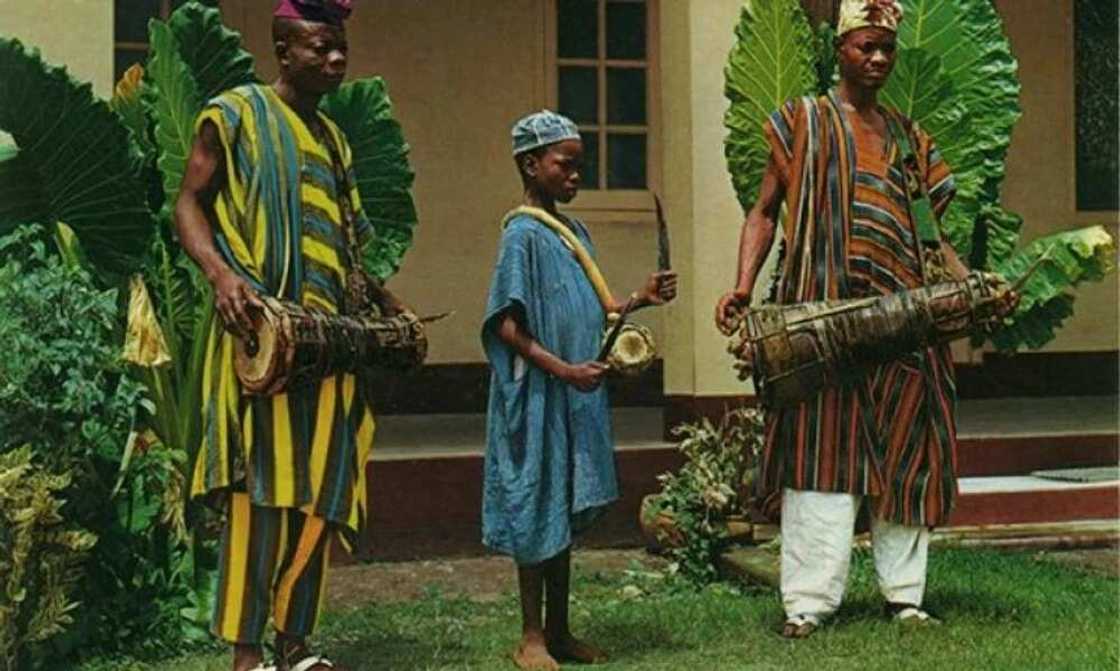
Source: Depositphotos
Photo: musicinafrica.com
Other regularly handled drums in Ijaw are the clay bass pot. These types of drums are also typical for Igbo and Udu. Drums are usually used for dances to beat the rhythm during festivals and celebrations.
READ ALSO: 7 Strange Traditions In Nigeria You Probably Never Knew
Source: Legit.ng








